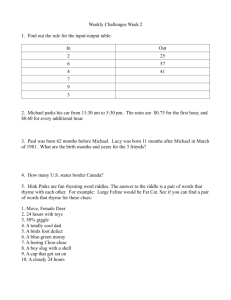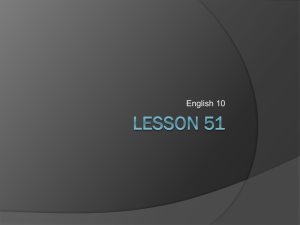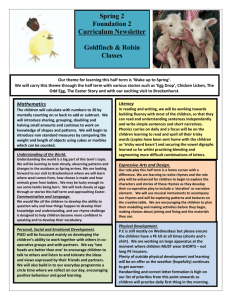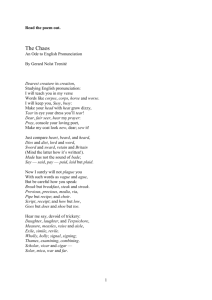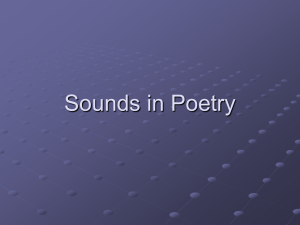Rhyme
advertisement
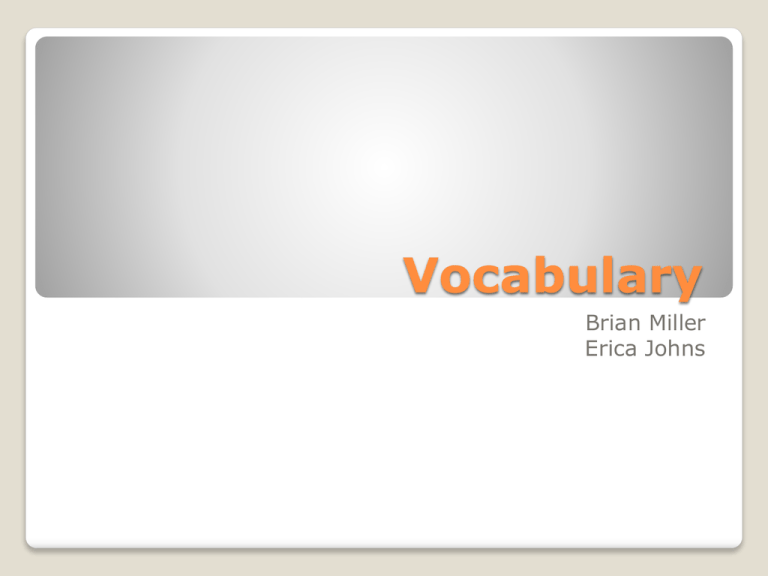
Vocabulary Brian Miller Erica Johns Rhyme is the repetition in two or more nearby words of the last stressed vowel and all the syllables that follow it. Rhyme Most rhymes occur at the end of the poetic line, the term for which is end rhyme. ◦ The rhyme may consist of only one syllable, or it may have multiple syllables. ex: Duck and Truck- one , Funny and Bunnymultiple. End Rhyme Rhymes that end on a stressed syllable are called masculine and rhymes that end on an unstressed syllable are called feminine. ◦ ex: fond and pond are masculine, while attention and dimension are feminine. End Rhymes Cont’d Rhymes may occur within a line of poetry rather than at the end, this is called internal rhyme ◦ Ex: And binding with briars my joys and desires. From “The Raven” by Edgar Allan Poe Internal Rhyme In scanning a poem, rhymes are marked with letters of the alphabet, with the first rhyme designated as A, the second B, etc. ◦ The pattern of recurrences is called a rhyme scheme. ◦ Some stanzaic patterns are identified by particular rhymes schemes Ex: Sonnet, Couplet, and Ballad Meter Rhyme Scheme When the rhyming sounds match exactly, the rhyme is called perfect. ◦ An alternative form is eye rhyme, in which words look on the page like perfect rhymes but are pronounced differently. Ex: look and book are perfect while, cover and over are classified as eye rhyme. Perfect and Imperfect Rhyme Rhymes may also be partial rather than perfect, varying the corresponding vowel sounds and/or the consonant sounds. This can be classified as imperfect, half, off, or slant rhyme. Cont’d
